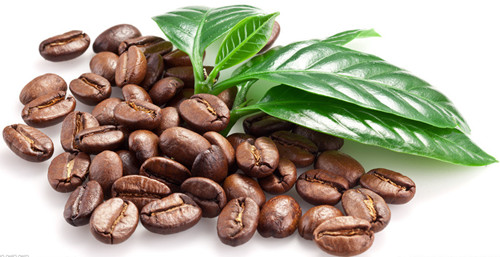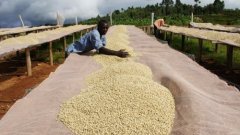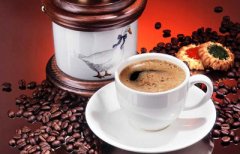The flavor of Hawaiian Kona coffee introduces the most beautiful coffee beans in the world.
Hawaiian kona coffee is the only top-quality coffee produced in the 50 states, and the united states is naturally its largest market.
Features: Hawaii Kona coffee beans have the most perfect appearance, its fruit is unusually full, and bright luster, is the world's most beautiful coffee beans. The coffee is soft and rich, with an attractive nutty flavor, balanced acidity, as charming as the colorful colors of Hawaii and a long finish. The world famous "Hawaii Kona" is mellow and sour coffee beans. Kona coffee is grown on the slopes of Mauna Loa volcano on the southwest coast of Hawaii. In terms of flavor, Kona coffee beans are closer to Central American coffee than Indonesian coffee. It is of high average quality, carefully prepared, medium texture, good acidity, very rich flavor, and fresh Kona coffee is extremely fragrant. If you think your coffee is too thick, African too sour, or Central American too rough, Kona may be for you. Kona is like a girl walking in the Hawaiian sun and breeze, fresh and natural. Kona coffee beans are evenly shaped, with intense acidity and sweetness, and a smooth, moist taste. Because it grows on volcanoes and has a high density of artificial cultivation, each bean can be said to be a spoiled "lady", beautiful, plump and baby-like delicate skin.

Yield: Unfortunately for coffee aficionados, only about 1400 hectares produce Kona coffee. And because of Hawaii's high income levels and high tourist numbers, Kona coffee is so expensive that even kona blend (less than 5 percent kona) is sold. In recent years, neighboring islands such as maui, kauai and molokai have also begun to grow coffee commercially. Kona coffee is truly a rare gem of the world and is not easy to find. Real Hawaiian Kona coffee has a caramel-like sweetness that gives you a unique pleasure and leads you slowly into the transcendent state of coffee tasting. Hawaii's coffee industry is among the most tightly regulated of all coffee producers, with the highest labor costs and the best investment levels. Hawaii's coffee industry has to compete for space with the expanding tourism industry. Most coffee is grown on the slopes of Mauna Loa. Mauna Loa was originally a volcano located in the western part of the Kona region of Hawaii. The length of the coffee producing area is about 30 kilometers, and its cultivation area is mainly concentrated in the north and south of the area. Coffee trees are grown in relatively inhospitable areas, but the soil is fertile and contains volcanic ash. Despite the physical effort required to start cultivation and the difficulties involved in managing it, it is reassuring to note that coffee trees in Kona (at least those growing above 90 metres) appear to be immune to any pests and diseases. Real kona coffee is a real gem and not easy to find. The best Kona coffees are divided into three categories: ExtraFancy, Fancy and NumberOne. This third-class coffee is produced both on the estate and under natural conditions. Most coffees on the market that call themselves Kona contain less than 5% real Hawaiian Kona coffee. Another good Hawaiian coffee can be found in the United States-Kai Farms.
Cultivation mode: Hawaii tourism is developed, visitors can visit coffee farms, see or participate in the coffee harvest, coffee bean processing, roasting and grinding and other processes, and make a cup of coffee that really belongs to themselves. There are about 600 independent coffee farms in the Kona area, most of which are small family farms, usually between 18 and 42 acres. Kona coffee can bring in more than $10 million a year to these coffee farms. Kona coffee has always been grown using the family farming model. At first, only men were allowed to work in the coffee garden, but later women joined in. Hawaiian family production was more dependent on family effort than on hiring workers, so it was normal for Hawaiian families to have eight or nine children. Since then, new immigrants from the Philippines, the United States and Europe have come to Hawaii to engage in coffee farming. Over time, Hawaii has formed a social atmosphere centered on family culture and easy to absorb foreign culture, which has become a major feature of Hawaii. Each island has several unique places for tourists and locals to taste and buy coffee, ranging from cozy shops to comprehensive coffee knowledge centers. In Hawaii, you can watch the blazing sunset sink into the red-orange sea, feel the fresh, flowery air, and sit on the beach with a cup of coffee. I'm afraid there's no place in the world that can offer you such enjoyment.
Location: Authentic Hawaiian Kona coffee offers a unique pleasure that leads you slowly into the transcendent state of coffee tasting. And this is all from the oldest Arabica coffee tree. Hawaii is the only state in the United States to grow coffee, which is grown on the five main islands of the Hawaiian archipelago: Oahu, Hawaii, Maui, Kauai and Mauroka. Coffee produced on different islands also has its own characteristics. Coffee from Kauai is soft and smooth, coffee from Mauroka is high in alcohol and low in acidity, and coffee from Maui is medium in acidity but has the strongest flavor. Hawaiians are proud of their 100% indigenous Arabica coffee beans. [1]Hawaii Island is the largest island in the Hawaiian Islands, so it is also called the Big Island. Kona coffee is produced in the west and south of Kona area of Hawaii Island. Coffee trees are spread all over the slopes of Hualalai and Mauna Loa. The altitude here is 150 meters to 750 meters, which is suitable for coffee growth.
Climatic conditions: The excellent quality of Kona coffee is due to the favorable geographical location and climate. Coffee trees grow on the slopes of volcanoes, and their geographical location ensures the altitude required for coffee growth; the dark volcanic ash soil provides the minerals needed for coffee growth; the climatic conditions are very suitable, and the sun gently passes through the air filled with moisture in the morning. In the afternoon, the mountains become more humid and foggy, and the clouds in the air are natural umbrellas for coffee trees. At night, they become clear and cool, but there is no frost. Natural conditions have allowed the average yield of Kona coffee to be very high, reaching 2240 kilograms per hectare, compared with 600 to 900 kilograms per hectare in Latin America.
Important Notice :
前街咖啡 FrontStreet Coffee has moved to new addredd:
FrontStreet Coffee Address: 315,Donghua East Road,GuangZhou
Tel:020 38364473
- Prev

An introduction to the Fine Coffee of Tanzania the flavor characteristics of Tanzanian coffee
Due to political instability and rampant diseases and insect pests, the coffee industry in Tanzania has been damaged, leading to a decline in the overall level of coffee and instability in quality, which in turn lead to lower prices, which are usually the result of a further decline in the coffee industry. What's more, it is estimated that more than 12% of the Arabica coffee grown in northern Tanzania from 1969 to 1985 was smuggled.
- Next

Yunnan Pu'er Coffee introduction to Yunnan Pu'er Coffee planting Yunnan Pu'er Coffee roasting Yunnan
[output] compared with the popularity of Pu'er tea, the fame of Pu'er coffee is not commensurate with the output. Yunnan coffee production accounts for 98.8% of the country's total output; Pu'er coffee production accounts for 57.8% of Yunnan's total output; and the price of a cup of Starbucks coffee is equivalent to 25 cups of AA grade Yunnan coffee beans. [planting] in 2011, one mu of coffee trees planted in Pu'er could earn 4000 yuan and 8000 yuan. [export]
Related
- Does Rose Summer choose Blue, Green or Red? Detailed explanation of Rose Summer Coffee plots and Classification in Panamanian Jade Manor
- What is the difference between the origin, producing area, processing plant, cooperative and manor of coffee beans?
- How fine does the espresso powder fit? how to grind the espresso?
- Sca coffee roasting degree color card coffee roasting degree 8 roasting color values what do you mean?
- The practice of lattes: how to make lattes at home
- Introduction to Indonesian Fine Coffee beans-- Java Coffee producing area of Indonesian Arabica Coffee
- How much will the flavor of light and medium roasted rose summer be expressed? What baking level is rose summer suitable for?
- Introduction to the characteristics of washing, sun-drying or wet-planing coffee commonly used in Mantenin, Indonesia
- Price characteristics of Arabica Coffee Bean Starbucks introduction to Manning Coffee Bean Taste producing area Variety Manor
- What is the authentic Yega flavor? What are the flavor characteristics of the really excellent Yejasuffi coffee beans?

